Xinwu Zhao,Hongyan Huang
(School of Energy Science and Engineering, Harbin Institute of Technology, Harbin 150001, China)
Abstract:
Aerodynamic noise control is one of the key technologies in the development of stealth technology of torpedo. The noise producing mechanism in an ultra-high expansion ratio turbine with partial admission were discussed. Wide wakes originating from non-outlet region between elliptical nozzles, circumferential non-uniformity owing to partial admission design and complex shock system formed in narrow space between nozzles and rotors are three main sources of aerodynamic noise in this turbine. Thus, two kinds of aerodynamic noise control methods were put forward, namely adding axial gap between the nozzle and rotor, nozzle-down, bilateral repair and trailing edge blowing. Steady annulus simulation results showed that the aerodynamic noise was significantly reduced by more than 10 dB after optimization, which had little impact on the aerodynamic performance of the turbine.
Key words: ultra high expansion ratio turbine aerodynamic noise flow characteristics optimization
DOI:10.11916/j.issn.1005-9113.16126
Clc Number:O357.1
Fund:
Xinwu Zhao, Hongyan Huang. Investigation on Noise Control Technology of Ultra-High Expansion Ratio Turbine[J]. Journal of Harbin Institute of Technology, 2018, 25(1): 46-56. DOI: 10.11916/j.issn.1005-9113.16126.

Fund Sponsored by the National Key Basic Research Special Foundation of China (Grant No.613188020201) Corresponding author Hongyan Huang, E-mail: xwzhao@hit.edu.cn Article history Received: 2016-06-06
Contents Abstract Full text Figures/Tables PDF
Investigation on Noise Control Technology of Ultra-High Expansion Ratio Turbine
Xinwu Zhao

 , Hongyan Huang
, Hongyan Huang School of Energy Science and Engineering, Harbin Institute of Technology, Harbin 150001, China
Received: 2016-06-06
Fund: Sponsored by the National Key Basic Research Special Foundation of China (Grant No.613188020201)
Corresponding author: Hongyan Huang, E-mail: xwzhao@hit.edu.cn
Abstract: Aerodynamic noise control is one of the key technologies in the development of stealth technology of torpedo. The noise producing mechanism in an ultra-high expansion ratio turbine with partial admission were discussed. Wide wakes originating from non-outlet region between elliptical nozzles, circumferential non-uniformity owing to partial admission design and complex shock system formed in narrow space between nozzles and rotors are three main sources of aerodynamic noise in this turbine. Thus, two kinds of aerodynamic noise control methods were put forward, namely adding axial gap between the nozzle and rotor, nozzle-down, bilateral repair and trailing edge blowing. Steady annulus simulation results showed that the aerodynamic noise was significantly reduced by more than 10 dB after optimization, which had little impact on the aerodynamic performance of the turbine.
Key words: ultra-high expansion ratio turbine aerodynamic noise flow characteristics optimization
1 Introduction Aerodynamic noise is one of the main sources of the noise of torpedo thermal components. A series of researches have been carried out on the mechanism and the control of turbine noise. At the end of 1960s, Smith and Bushell[1] of the Royce-Rolls company noticed the importance of the turbine noise control, and developed an empirical correlation formula for predicting the turbine noise. And other engine company developed a lot of turbine noise predicting formula at the same time. Neise[2] reported that by introducing jetflow through particular holes near the trailing edge of an axial fan blade, the discrete noise was reduced by nearly 10 dB, while the broadband noise slightly increased. In addition, he also studied the effect of hole size, location, and the fluctuation of the jetflow on the noise control.Kazin[3] experimentally studied the spectral characteristics of turbine noise. However, there were almost none literatures on the aerodynamic noise study of turbine in 1980s to 1990s.
In 2008, Zante et al.[4] reported that the entropy interference was also a main noise source in turbine, in spite of the interference between wake and blade. In 2009, Broszat[5] discovered the effect of the gap between the turbine exit guide vane and the final stage of the rotor as well as the lean of the exit guide vane, on the interference of tone noise, by launching experiments on the 1.5 stage low pressure turbine STTF. In 2012, Broszat[6] put forward the "inverse cut-off" design, based on Tyler & Sofrin rules, to reduce the interference tone noise, as well as to lower the noise level of the tone noise of exit guide vane and the final stage of the rotor during the approaching stage of the plane. Traub[7] optimized the design of a six-stage turbine by adjusting the number of stator blades and the gap between the stator and rotor of the last stage, as well as adjusting the number of blades of the exit guide vane, which reduced the noise of 5-7 dB. His research met the demand of the integration of aerodynamics and acoustics, which was based on the theory of Lawson's semi empirical method and the linearized of Euler equations. Vázquez[8] studied the clocking effect on noise of a low pressure turbine stage. Gonzalez[9] predicted turbine tone noise by using a linearized computational fluid dynamics method, and compared the numerical predictions with measurements from two low-pressure turbines, results showed that the method was available for turbine tone noise prediction. The similar studies were done by Fernández et al.[10-11] which focused on the interaction noise between rotor and stator in turbomachines.
On the other hand, researches at present mainly focused on the study of aerodynamic noise of conventional turbine[12-16], while the researches of aerodynamic noise of turbine with Ultra-high expansion ratio was not known to the author's knowledge. Ultra-high expansion ratio turbine has the characteristics of simple structure, small volume and large single stage enthalpy drop. The turbine is generally of the form of the turbine with very small reaction, which makes the Mach number of guide vanes very high, and the complex shock system was formed between the moving rotor and the guide vane[17-18]. These structural and design features will make the mechanism and characteristics of the aerodynamic noise of the ultra-high expansion ratio turbine different from the conventional turbine.
A single stage ultra-high expansion ratio turbine was studied in this paper. An unsteady annulus simulation was carried out to clarify the mechanism of aerodynamic noise through flow characteristics analysis. A steady case was also calculated to distinguish its difference with unsteady result. Then based on these flow characteristics resulting in aerodynamic noise, several noise control methods were proposed to reduce the noise level of this turbine and tested via steady simulations.
2 Turbine Model and Numerical Methods The baseline model of the ultra-high expansion ratio turbine investigated in this paper is consisted of 6 nozzles and 52 rotors with partial admission design, as shown in Fig. 1. Characteristic geometry parameters, which have been normalized by axial chord length cx, were given in Table 1. The designed mass flow rate of the turbine is 0.652 kg/s. The expansion ratio of the turbine stage reaches 10.29, which is extremely high comparing to the conventional turbine.
Figure 1
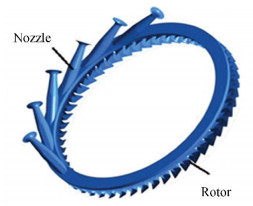 Figure 1 Schematic of the ultra-high expansion ratio turbine
Figure 1 Schematic of the ultra-high expansion ratio turbine 表 1
Nozzle 6 Length of ellipse major axis: 2.195
Length of ellipse minor axis: 0.678
Radius of the throat: 0.204
Rotor 52 Blade height: 0.84
Table 1 Characteristic geometry parameters of the turbine
Commercial CFD solver ANSYS-CFX was employed to calculate the three-dimensional flow field. The 3D viscous Reynolds averaged N-S equation was solved. The time marching finite volume method was used for calculation. In order to obtain a good accuracy, the space term was discretized using the two-order upwind scheme, and the time term was discretized using the two-order backward Euler scheme. The two-equation k-ω model was applied to introduce turbulence.
Grids were generated in two domains. The first stationary domain includes 6 nozzles and a full annulus intermediate layer. Due to complex geometric structure, unstructured grid was generated in this domain by ICEM. While in the second rotatory domain, structured grid was built in 52 rotor passages with O-type topology by AutoGrid V5, a meshing module of NUMECA. Fig. 2 presents schematics of nozzle and rotor passage mesh. In order to guarantee the reliability of numerical simulations, a grid independence test has been carried out with several grid sets for calculation. In this work, the grids meet the resolution requirement of y+≤5. The selected grid set is shown in Table 2.
Figure 2
 Figure 2 Mesh of nozzle and rotor passage
Figure 2 Mesh of nozzle and rotor passage 表 2
(thousand) Nodes of full annulus
(thousand) Total nodes
(thousand)
Nozzle 430.7 2 584.2 6 633.2
Rotor 77.9 4 049.0
Table 2 Selected grid set for computation
For the sake of clarifying the inherent unsteady interaction flow mechanism between nozzles and rotors, full annulus unsteady simulation was carried out on the ultra-high expansion ratio turbine original model with sliding interface model between intermediate layer and rotor passages, with dual time stepping method. 36 physical time steps per passage and 10 pseudo-time iterations were performed to obtain stable periodic solutions by monitoring pressure signals between nozzles and rotors. One result file was saved every 6 steps. Steady simulations were also performed in full annulus grids. Due to the partial admission design, the frozen rotor model was used for turbine rotor stator interface, which passed the average parameters as well as took circumferential uneven of the flow parameters into account. Actual values of total pressure, total temperature and flow direction at working condition were imposed at inlet boundary. Incoming flow was normal to the nozzle inlet. Outlet boundary type was set to be opening. Entrainment pressure and opening temperature were set at the outlet to determine the working condition.
3 Mechanism of Aerodynamic Noise of Ultra-high Expansion Ratio Turbine The aerodynamic noise of the turbine is mainly caused by the unsteady pressure fluctuation in the blade passage. Goldstein[19] provided the basic equation (Eq.(1)) of the acoustics considering the effect of moving solid surfaces, which was the fundamental equation of studying the aerodynamic noise in turbomachinery. The fi is the force of the solid wall working on the fluid, r is the distance from the source point to the observation point, C is the Doppler factor, ηi is the coordinates of the sound source on the rotating coordinate system, W and B represent the velocity and acceleration of the solid wall.
$\begin{array}{l}p' \left( {{x_i}, t} \right) = \frac{1}{{4{\rm{ \mathit{ π} }}}}\frac{{{\partial ^{\rm{2}}}}}{{\partial {x_i}\partial {x_j}}}\int\limits_V {\left[{\frac{{{\mathit{q}_{\mathit{ij}}}}}{{r\left| C \right|}}} \right]{\rm{d}}V\left( {{\eta _i}} \right) - } \\\;\;\;\;\;\;\;\;\;\;\;\;\;\;\;\;\;\frac{1}{{4{\rm{ \mathit{ π} }}}}\frac{{{\partial }}}{{\partial {x_i}}}\int\limits_S {\left[{\frac{{{\mathit{f}_\mathit{i}}}}{{r\left| C \right|}}} \right]{\rm{d}}\mathit{S}\left( {{\eta _i}} \right) - } \\\;\;\;\;\;\;\;\;\;\;\;\;\;\;\;\;\;\frac{1}{{4{\rm{ \mathit{ π} }}}}\frac{{{\partial }}}{{\partial {x_i}}}\int\limits_{{\mathit{V}_\mathit{c}}} {\left[{\frac{{{\mathit{\rho }_{\rm{0}}}{\mathit{b}_\mathit{i}}}}{{r\left| C \right|}}} \right]{\rm{d}}\mathit{V}\left( {{\eta _i}} \right) + } \\\;\;\;\;\;\;\;\;\;\;\;\;\;\;\;\;\;\frac{1}{{4{\rm{ \mathit{ π} }}}}\frac{{{\partial ^{\rm{2}}}}}{{\partial {x_i}\partial {x_j}}}\int\limits_{{\mathit{V}_\mathit{c}}} {\left[{\frac{{{\mathit{\rho }_{\rm{0}}}{W_\mathit{i}}{W_\mathit{j}}}}{{r\left| C \right|}}} \right]{\rm{d}}\mathit{V}\left( {{\eta _i}} \right)} \end{array}$ (1)
According to the characteristics of turbine internal flow, as well as the right-hand side of Eq.(1), the causes of aerodynamic noise of turbine mainly include the inlet turbulence, interaction between the upstream viscous wake and downstream rotor blade, blade vibration forced by the unsteady aerodynamic effects. Compared with the conventional turbine, the aerodynamic noise of ultra-high expansion ratio turbine is more complicated. Full annulus unsteady simulation result was analyzed below from the point of flow characteristics, in order to interpret the aerodynamic noise mechanism in this ultra-high expansion ratio turbine.
First of all, for the convenience of manufacturing, the drilling nozzle is usually used in ultra-high expansion ratio turbine instead of turbine guide vane[20]. Since outlet shape of drilling nozzle is elliptical, a non-outlet triangle area exists between two adjacent nozzles. Thus, a low speed area is formed downstream of this area and a wide wake comes into being. Time-averaged relative Mach number distribution at rotor inlet S3 cross section is shown in Fig. 3. The view point locates in downstream of rotor. Theta coordinate system is built in this figure. Rotors locate in the circumference angle between -15° to 165° is followed by nozzle outlets, where six high Mach number regions are located, indicating the high speed incoming flow from nozzle. Five low speed triangle regions are clearly seen between six high Mach number regions, which is caused by triangle non-outlet areas between elliptical nozzle outlets. Moreover, areas between nozzle outlets and hub as well shroud also induce low Mach number regions near hub and shroud. These wide wakes owing to elliptical outlet shape produce more intense fluctuation of flow parameters in downstream rotor passages compared with conventional turbines. Thus, stronger noise is induced by interaction between non-uniform incoming flow and rotor blades.
Figure 3
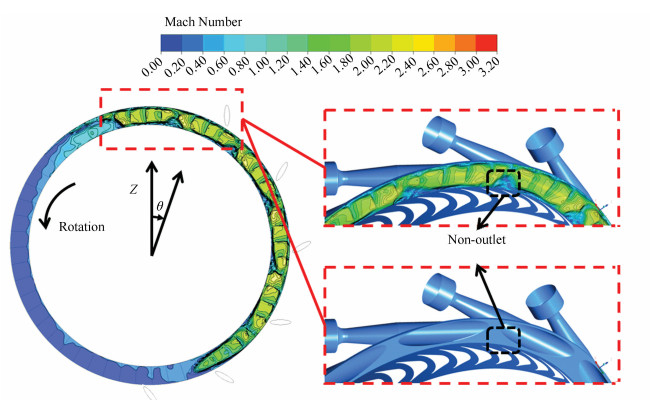 (view point:left-from inlet to outlet; right-from outlet to inlet) Figure 3 The non-outlet triangle area of nozzle outlet
(view point:left-from inlet to outlet; right-from outlet to inlet) Figure 3 The non-outlet triangle area of nozzle outlet Besides, due to the small mass flow rate and high vane outlet Mach number, the channel height shall be too small if the drilling holes were distributed on the whole circle, which reduces the turbine efficiency dramatically. Therefore, the partial admission design is used in ultra-high expansion ratio turbine[21]. The drilling holes are distributed partially in specific circumferential range. During the rotation of the rotor, the rotor blades alternately go through the area with drilling holes and the area without drilling holes, which intensify the circumferential non-uniformity of the flow parameters. The aerodynamic noise of the turbine is increased under this circumstance. As shown in Fig. 3, Mach number outside the nozzle inlet circumference is rather low. Upstream incoming flow barely goes downstream through these regions. Middle span Mach number distribution along circumference at nozzle outlet is presented in Fig. 4. Theta values in horizontal axis are in accord with coordinate system built in Fig. 3. During regions downstream nozzle outlets, i.e. theta between 0° and 165° as well as 345° and 360°, Mach number is much higher than that in circumference outside outlet regions, ranging from 1.0 to 2.5. Since circumferential scope of each nozzle outlet is 30°, Mach number peaks occur every 30°, as seen at 15°, 45°, 75°, 105°, 135° and 345°. Besides, there are three spikes between each peaks, which are induced by forward propagation of shock wave at blade leading edges, owing to close distance between nozzles and blades. Behind 165°, Mach number decreases to below 0.3, even 0.1, and does not rise until 300°. In conclusion, flow non-uniformity in circumferential direction is produced by partial admission design, as well as narrow gap between nozzles and rotors.
Figure 4
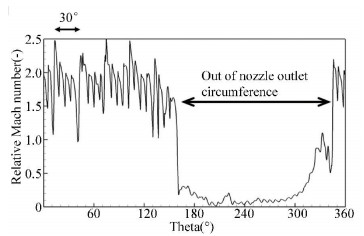 Figure 4 Middle span Mach number distribution along circumference at nozzle outlet
Figure 4 Middle span Mach number distribution along circumference at nozzle outlet In addition, due to characteristics of the ultra-high expansion ratio turbine, the reaction of the turbine is usually small to meet the demand of maximum power. The Mach number of the vane outlet is high, and a complicated wave system is formed between the rotor and stator. Eq.(1) shows that this strong potential field will increase the tone aerodynamic noise of turbine. Fig. 5 presents contour of time-averaged Mach number distribution at 50% span, as well as part of nozzles downstream convergent nozzles. As seen in Fig. 5, flow Mach number reaches to 2.4 through convergent region and rises to 2.6 near nozzle outlet. High speed incoming flow from nozzle outlet impinges on turbine blades and strong shock waves are formed at locations 30% axial chord downstream leading edge and propagate downstream. Shock wave from the long edge of nozzle reflects at non-outlet region, where the highest Mach number is reached, which consists with formation of peaks indicated in Fig. 4. Likewise, Mach number spikes between peaks, as shown in Fig. 4, are induced by shock wave forward propagation. Thus, periodic non-uniformity along circumference of Mach number is ascribed to shock wave forward propagation. Flow inside rotor passages accelerates downstream shock wave and goes toward rotor outlets. A large scale of low velocity regions appears at blade suction side in most passages, which are caused by large turning angle and severe shock-boundary layer interaction.
Figure 5
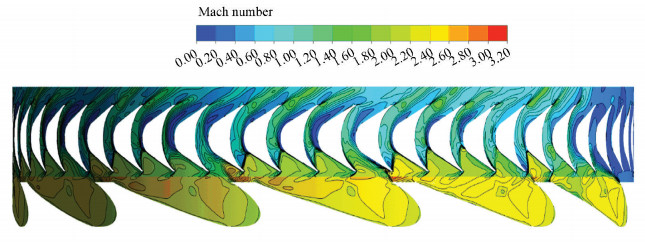 Figure 5 Contour of time-averaged Mach number distribution at 50% span
Figure 5 Contour of time-averaged Mach number distribution at 50% span Unsteady flow and loss mechanisms are analyzed via flow characteristics at different time steps in one blade passage cycle. Contours of entropy distribution at 50% span at six different time steps are presented in Fig. 6. Local entropy has been normalized with inlet mass-averaged values. At all different time steps, entropy characteristics present two distribution patterns inside rotor passages. One pattern occurs in passages downstream nozzle outlet and the other downstream non-outlet regions between two nozzles. In passage 1-4 at 1/6 T, as labeled in Fig. 6, high entropy regions start to appear just downstream strong shock wave at the suction side, presenting the loss caused by shock-boundary layer interaction. While in passage 5, high loss region has been observed upstream passage inlet. Shock wave in passage 4 propagates upstream and reflects at non-outlet regions, consequently inducing this high loss region upstream passage 5. Both outlet and non-outlet regions exist in passage 1. Flow from short side of nozzle outlet goes through passage 1 near pressure side, while flow starting from non-outlet region enters passage 1 near suction side and induces quite high loss region at the leading edge. This high loss region is also ascribed to reflection of shock wave from passage 0, similar to loss pattern in passage 5.
Figure 6
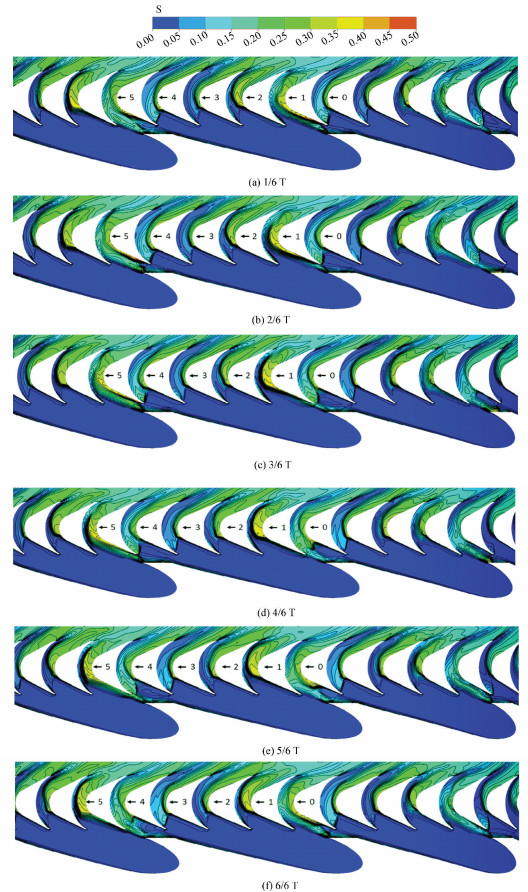 Figure 6 Contours of entropy distribution at 50% span at six different time steps
Figure 6 Contours of entropy distribution at 50% span at six different time steps From 4/6 to 6/6 T, shock wave comes into being at the inlet of passage 1. Since passages 2 and 3 move from short side to long side of the nozzle, high loss regions inside these passages shrink and low loss flow goes downstream. Passage 4 moves to non-outlet region gradually and is affected by shock reflection of passage 3 at passage inlet. Passage 5 has already moved to the downstream area of the adjacent nozzle.
In consideration of loss distribution inside rotor passages at different time steps, it is demonstrated that high loss regions do not flow out of passage completely in one rotor periodicity, but stay in passages in form of large scale vortex.
Due to the partial admission design, flow characteristics in passages outside of the nozzle inlet circumference are naturally different from the other half. Flow characteristics at 50% span in passages outside of nozzle outlet circumference are presented in Fig. 7. The large picture in the middle depicts entropy distribution, in which normalized entropy reaches to 0.4 and decreases to below 0.2 downstream in the position in most passages. But in passages at the right side of the picture, i.e. passages close to the last nozzle, entropy value is extremely high at inlets. Partial enlarged drawing of this area at lower right corner presents pressure coefficient Cp and velocity vector distributions. Vector distribution indicates that such high loss region is a consequence of reverse flow at inlet of rotors. High speed flow from last nozzle forms shock wave and brings down pressure value, consequently inducing the reverse flow. Expect two passages downstream the nozzle, a mass of reverse flow exists inside rotor passages and barely enters downstream. Enlarged drawing of central section presents pressure and streamline distribution. Apparently, there are two large scale vortices staying in every rotor passages, locating upstream and downstream the maximum thickness position respectively.
Figure 7
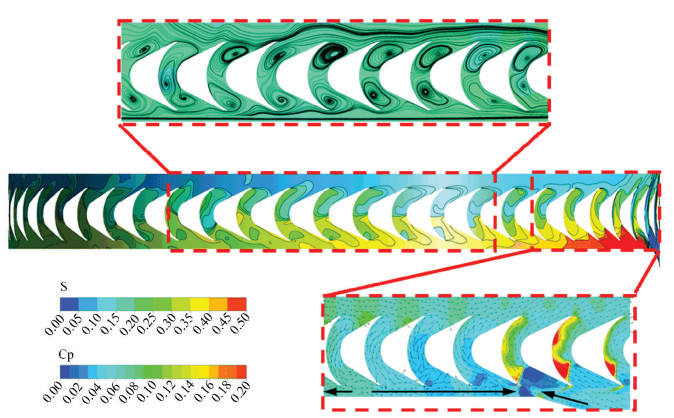 Figure 7 Flow characteristics at 50% span in passages outside of nozzle outlet circumference
Figure 7 Flow characteristics at 50% span in passages outside of nozzle outlet circumference 4 Aerodynamic Noise Control Technology of Ultra-high Expansion Ratio Turbine Aerodynamic noise is mainly referring to the noise radiation produced by the pulsating flow, rather than that caused by structure vibration. It is shown in the last section that the aerodynamic noise is mainly caused by the non-uniform velocity field or the pressure pulsation in the fluid.
According to the above analysis of the sources of aerodynamic noise, two kinds of methods for the aerodynamic noise control were put forward, i.e.: (1) Increasing the axial gap between rotor and stator. By increasing the distance, the circumferential non-uniformity of the flow that comes from the nozzle passage will be weakened due to the dissipation, which weakens the non-uniform impact on the rotor blades. (2) Nozzle down, bilateral trimming and trailing edge blowing (see Fig. 8). By reshaping the trailing edge section of both sides of the nozzle, the wake of stator will be thinner along the radial direction. By elevating the entrance section of the nozzle, the low speed flow that comes from the triangle area will be locked in the lower area of the rotor passage, which reduces the pressure fluctuation in the rotor passage. And by trailing edge blowing, the pressure of over expansion area will be increased, the circumferential non-uniformity of the flow will be further weakened.
Figure 8
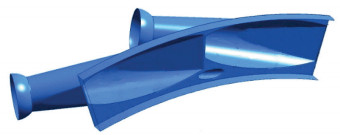 Figure 8 Shape modification scheme of nozzle
Figure 8 Shape modification scheme of nozzle In order to verify the feasibility of the aerodynamic noise control method, the optimization of a single stage high expansion ratio turbine was carried out. The operations were: (1) adjusting the axial gap between the stator and rotor from the original 0.32 times of the rotor's axial chord length to 0.8 times of the axial chord length; (2) stooping the nozzle down to 2 degrees, bilateral trimming, and arranging blow hole in the triangle non outlet area; (3) adjusting the tip clearance from 9% in the height of rotor blade to 4.5% of the height.
To validate the effect of optimization, numerical simulation was used to calculate the flow field within the flow passage by using CFX software, then the flow parameters was imported into LMS virtual lab software for acoustic calculation software. Acoustic grid envelope was contributed in the pre-process. The pressure pulsation was mapped to acoustic grid, and Fourier transformation was launched. Noise information was computed by using the direct boundary element method. The sound field is calculated according to the flow field.
Since the time and resource consuming of unsteady full annulus simulation is extremely large, evaluation of aerodynamic noise control methods is intended to be completed via steady simulation. Comparison between unsteady and steady results is performed below in order to validate the availability of steady simulation. Relative Mach number circumferential distribution of middle span at rotor inlet in both unsteady and steady results is depicted in Fig. 9. Six high Mach number regions locate from 0° to 165° and 345° to 360° in both unsteady and steady results, familiar with distribution in Fig. 4. It is notable that unsteady results present close distribution pattern at all six time steps within the entire circumference, with little change as blades rotating. Within the nozzle outlet region, Mach number values and fluctuation ranges of steady result are close to unsteady results at different time steps. However, Mach number of steady within range from 165° to 300° is remarkably higher than unsteady ones. It is suggested that unsteadiness of flow parameters at rotor outlet is not strong. Thus steady simulation is capable of providing relative accurate flow parameter distribution within this region, where aerodynamic noise mainly originates from. Hence, steady annulus simulation is utilized to evaluate effectiveness of aerodynamic noise control methods in this paper.
Figure 9
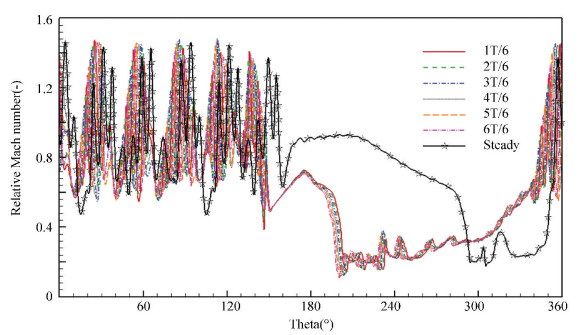 Figure 9 Relative Mach number circumferential distribution of middle span at rotor inlet
Figure 9 Relative Mach number circumferential distribution of middle span at rotor inlet Effects of improved nozzle shape on noise as well as aerodynamic performance of the single stage ultra-high expansion ratio turbine are shown in Table 3. The noise level is the average values of the noise at all the observation points in the downstream of rotor outlet. As shown in Table 3, the aerodynamic noise was reduced by more than 10 dB with the proposed noise control method. Whilst mass flow rate, expansion ratio and adiabatic efficiency change a little. Relative variations of Mach number at nozzle out and rotor inlet/outlet are less than 5%. It is proved that proposed aerodynamic noise control methods are able to reduce noise level by more than 10 dB without remarkable effect on aerodynamic performance in this single stage ultra-high expansion ratio turbine.
表 3
Noise (dB) 161.900 148.600 8.215
Mass flow rate (kg/s) 0.652 0.652 0
Expansion ratio (-) 10.290 10.280 0.097
Adiabatic efficiency ηN(-) 0.625 0.619 0.960
Absolute Ma at nozzle outlet (-) 2.390 2.310 3.347
Absolute Ma at rotor outlet (-) 1.070 1.120 -4.673
Table 3 Effects of improved nozzle shape on noise and aerodynamic performance
Fig. 10 shows the Mach number distribution on the S1 surface of 50% height of the rotor. It can be seen that, since the axial gap between the stator and rotor is smaller in the original design, the average Mach number on nozzle outlet is higher and an oblique shockwave is formed at the rotor inlet. The shockwave formed some disturbing on the trailing edge part of the nozzle. The dovetail shockwave had a strong interaction with the rotor blade, which created strong unsteady force on the rotor. However, in the improved design, the gap between the stator and rotor was wider, which gave the dovetail shockwave, wake and the shockwave of the rotor inlet enough space to interact with each other, before entering rotor passage. The non-uniformity of the flow was reduced and the unsteady impact to the rotor was released, which was conducive to control the tone aerodynamic noise of the turbine.
Figure 10
 Figure 10 Contour of Mach number of 50% span
Figure 10 Contour of Mach number of 50% span Fig. 11 shows the pressure distribution on the S1 surface of 50% height of the rotor. For the improved turbine, the over expansion of in the straight segment of nozzle outlet of the flow field is reduced, which increases the pressure in the low pressure area of the non-outlet zone. The pressure distribution in the intake area of rotor blade becomes more uniform, which makes the flow field in the whole area more similar. Before optimization, the flow field of non-outlet nozzle area has a significant impact on two rotor blades. After optimization, there is only one rotor that is affected by the non-outlet nozzle area. Besides, since the gap between the nozzle and rotor is enlarged, the wake and main flow have longer distance for mixing together, which reduces the strength of shock wave between rotor and stator.
Figure 11
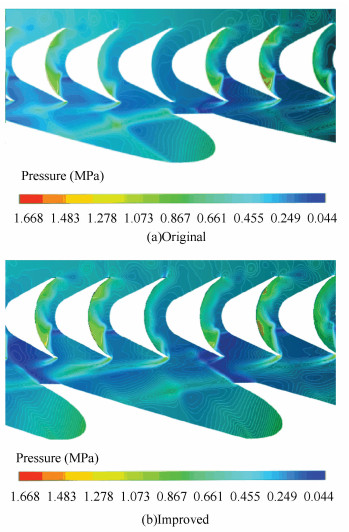 Figure 11 Contour of static pressure of 50% span
Figure 11 Contour of static pressure of 50% span Fig. 12 shows the contour of sound pressure of the source. The observation points of the two schemes were the same point at the nozzle exit. Since one of the main source of the aerodynamic noise is the unsteady fluctuating in the flow field, and knowing the fact that the unsteady fluctuation which is formed by the interaction between the nozzle wake and rotor is one of the main causes of the aerodynamic noise, the noise that has the nozzle passing frequency is taken into consideration. It can be seen that the noise of that frequency was lower in the improved design by more than 3 dB. Besides, the noise of other frequencies was also lower in the improved design. Thus, the noise control method was very effective to the ultra-high expansion ratio turbine.
Figure 12
 Figure 12 Pressure contours of sound source of the original and improved case
Figure 12 Pressure contours of sound source of the original and improved case Fig. 13 shows the frequency characteristics of the original and improved case. The tone noise of each frequency has been effectively controlled, which is consistent with the results of Fig. 12. The aerodynamic noise control method used in this paper can effectively control the aerodynamic noise of each order. In addition, because of the partial admission design of ultra-high expansion ratio turbine, the flow field entering the rotor passage has a frequency of 833 Hz. It is showed in Fig. 13 that the sound pressure level of 833 Hz is reduced dramatically.
Figure 13
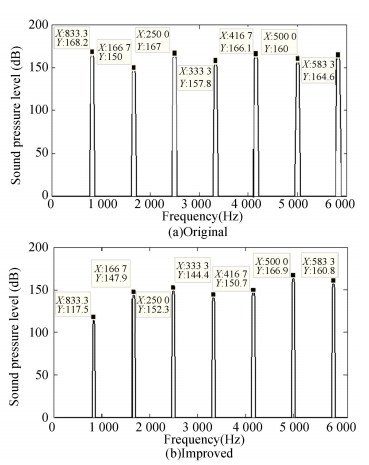 Figure 13 Frequency characteristics of the original and improved case
Figure 13 Frequency characteristics of the original and improved case 5 Conclusions The ultra-high expansion ratio turbine has the characteristics of single stage high expansion ratio and high nozzle outlet Mach number, which makes the aerodynamic noise characteristics of the ultra-high expansion ratio turbine differ from those of the conventional turbine. In this paper, unsteady full annuls simulation was carried out in the ultra-high expansion ratio turbine with partial admission. Combined with theoretical analysis and investigation on unsteady flow characteristics, three main sources of aerodynamic noise in this turbine were determined: (1) wide wakes originating from non-outlet region between elliptical nozzles; (2) circumferential non-uniformity owing to partial admission design; (3) complex shock system formed in narrow space between nozzles and rotors.
Two applicable aerodynamic noise control methods were proposed based on the flow field characteristics ultra-high expansion ratio turbine: (1) increasing the axial gap between rotor and stator; (2) nozzle down, bilateral trimming and trailing edge blowing. The effectiveness of these two methods was evaluated with steady annulus simulation, which has been validated with unsteady results and proved to be capable of providing relative accurate flow parameter distribution within nozzle outlet region. Steady annulus numerical results original and improved show that, the average values of the noise of all the observation points in the downstream of rotor outlet are reduced by more than 10 dB, while there is little effect on the aerodynamic performance of the turbine. The methods are feasible for the aerodynamic noise control of ultra-high expansion ratio turbine. In subsequent work, rules of the two kinds of noise control methods and their interactions will be further discussed, which provide a reference for the noise control design of ultra-high expansion ratio turbine.
References
[1] Smith M J T, Bushell K W. Turbine Noise: Its Significance in the Civil Aircraft Noise Problem. New York: ASME, 1969. (
 0)
0)[2] Neise W, Engherdt L. Technology approaches to aero engine noise reduction. Aerospace Science and Technology, 2003, 7(5): 352-363. DOI:10.1016/S1270-9638(03)00027-0 (
 0)
0)[3] Kazin S B, Matta R K. Turbine noise generation, reduction and prediction. Proceedings of the 2nd AIAA Aero-Acoustics Conference. Reston, VA:AIAA, 1975, AIAA: 1975-449. (
 0)
0)[4] Van Zante D, Envia E. Numerical investigation of turbine noise source hierarchy and its acoustic transmission characteristics. Performer: NASA Glenn Research Center, 2008. (
 0)
0)[5] Broszat D, Korte D, Ulf Tapken, et al. Validation of turbine noise prediction tools with acoustic rig measurements. Proceedings of the 15th AIAA/CEAS Aeroacoustics Conference. Reston, VA:AIAA, 2009, AIAA: 2009-3283. (
 0)
0)[6] Broszat D, Selic T, Marn A. Verification of the inverse cut-off effect in a turbomachinery stage part 1—numerical results. Proceedings of the 18th AIAA/CEAS Aeroacoustics Conference (33rd AIAA Aeroacoustics Conference). Reston, VA:AIAA, 2012, 2012-2306. DOI:10.2514/MAERO12 (
 0)
0)[7] Traub P, Kennepohl F, Heinig K. Active control of noise from turbomachines-A numerical simulation. Journal of Acoustical Society of America, 1996, 100(4): 2649-2650. (
 0)
0)[8] Vázquez R, Torre D, Serrano A. The effect of airfoil clocking on efficiency and noise of low pressure turbines. Journal of Turbomachinery, 2014, 136(6): Paper No: TURBO-13-1106. DOI:10.1115/1.4025572 (
 0)
0)[9] González A S, Aparicio J R F. Turbine tone noise prediction using a linearized computational fluid dynamics solver: comparison with measurements. Journal of Turbomachinery, 2016, 138(6): Paper No.TURBO-15-1264. DOI:10.1115/1.4032285 (
 0)
0)[10] Fernández Aparicio J R, Serrano A, Vázquez R. On the linearity of turbomachinery interaction noise. part Ⅰ: 2D analysis. Reston, VA: AIAA, 2011. AIAA Paper No. 2011-2951. (
 0)
0)[11] Fernández Aparicio J R, Serrano A, Vázquez R. On the linearity of turbomachinery interaction noise. part Ⅱ: 3D analysis. Reston, VA: AIAA, 2012. AIAA Paper No. 2012-2309. (
 0)
0)[12] Ma Zhile, Wang Lei, Qiao Weiyang, et al. Civil aircraft turbine noise generating mechanism and reduction technology. Proceedings of the 15th China Association for Science and Technology Annual Conference 13th Session: Aero Engine Design, Manufacturing and Application Technology Seminar, 2013. 1-5. (
 0)
0)[13] Wu Zhaowei, Qiao Weiyang. Analysis of the empirical prediction method for aero engine fan noise. Noise and Vibration Control, 2008, 28(4): 112-114. (
 0)
0)[14] Schulz J, Neise W, Moser M. Active noise control in axial turbomachines by flow induced secondary source. Proceedings of the 8th AIAA/CEAS Aeroacoustics Conference & Exhibition. Reston, VA: AIAA, 2002. (
 0)
0)[15] Liu Bo, Nan Xiangyi, Wang Yangang, et al. Progress and prospect of adsorption fan / compressor technology. Journal of Aerospace Power, 2007, 22(6): 945-954. (
 0)
0)[16] Vinogradov I, Zhou Y. Active control of rotor-stator interaction noise using stator-mounted actuators. AIAA Journal, 2014, 53(1): 150-160. (
 0)
0)[17] Dorney D J, Griffin LW, Gundy-Burlet K L. Simulations of the flow in supersonic turbines with straight centerline nozzles. J. Propulsion, 2000, 16(2): 370-374. DOI:10.2514/2.5580 (
 0)
0)[18] Griffin L W, Dorney D J. Simulations of the unsteady flow through the Fastrac supersonic turbine. Journal of Turbomachinery, 2000, 122(2): 225-233. DOI:10.1115/1.555453 (
 0)
0)[19] Goldstein M E. Aeroacoustics. New York: McGraw-Hill International Book Co., 1976. 305. (
 0)
0)[20] Hoffren J, Talonpoika T, Larjola J, et al. Numerical simulation of real-gas flow in a supersonic turbine nozzle ring. Journal of Engineering for Gas Turbines and Power, 2002, 124(2): 395-403. DOI:10.1115/1.1423320 (
 0)
0)[21] He L. Computation of unsteady flow through steam turbine blade rows at partial admission. Proceedings of the Institution of Mechanical Engineers, Part A: Journal of Power and Energy, 1997, 211(3): 197-205. DOI:10.1243/0957650971537105 (
 0)
0)